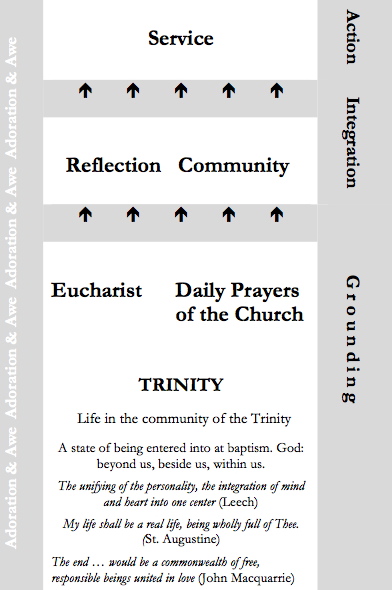For about 15 years I served as the organization development consultant for a NJ non-profit that did affordable housing, ran the domestic abuse shelter in the city, and offered a jobs training program.
The former executive director and I have stayed in touch over the years. We're close friends. We e-mail relatively frequently. We've had a good exchange going all through April. It's included all the usual stuff about the weather and our health. Also some about the new President.
She's written of her relatively new interest in meditation. She's not religious in the conventional sense though I once told her she reminds me of the Hebrew prophets.
In her last message she sent me a link to a video by Father Thomas Keating . It set off thinking about the relationship between mysticism and science. "Somehow a "new" cosmology feels right to me."
For many years now at the Order of the Ascension retreat - where I was last week - we'd have a period of centering prayer prior to the daily mass. Those who wished would gather. For most members those 20 minutes was what they did of centering prayer. The priest who initiated the practice, spend a great deal of time in centering prayer during the retreat. He's the rector of a parish in Arkansas. People in his parish had developed relationships among the men executed last week.
One of the things, there are many things, that the Order has attended to has been the need for a more reflective spirit and capacity in parish churches. Last year we all read and had an email conversation on Esther de Waal's Living with Contradiction: An Introduction to Benedictine Spirituality. I had tea with her back in the 80s in Canterbury when her husband was dean of the cathedral and she had just written her first book on Benedictine spirituality. Early in Living with Contradiction she wrote --
It is very fascinating to see how, in the ten years since this book was first written, increasing numbers of lay people like myself are turning to the monastic tradition. Here they find support on their Christian journey which they often fail to find in the institutional church, where parish and diocesan life can be extremely busy, and seemingly lacking in any sort of contemplative focus.
When Michelle and I conduct workshops using our linked books -- In Your Holy Spirit -- we have an exercise that uses the five categories in the books (Heyne book; Gallagher book)

We identify five spaces in the room each connected with one of the spiritual practices. People move several times -- which is "easiest" for you, which "hardest." The profile is always the same -- Mass and Community draw the most, then Service. Reflection is always low.
Two of our members have started participating in training workshops on contemplation within the past year. Obviously there's a need.
Last week also included some use of David Brooks' thick - thin ideas about organizations. In general Episcopal parishes seem to be moving in thinner and thinner directions. It's unskilled and superficial thinking but many clergy get invested in what they believe will be easier and attract more people. We go in that direction even if such parishes have little impact in actually shaping mature adults -- leaving a mark on people. All related to the above on reflection - contemplation. The Order is swimming against that tide. Makes life interesting.
It is interesting that whereas Sunday services are thought of in terms of numbers, an element of the vicarious is often imputed to the weekday Office of the priest. Yet Anglican theology insists that the creative channel of Grace in the world is not the priesthood but the Church; thus there is a most vital distinction between the priest alone and priest plus Remnant of one. There is no such particular distinction between priest plus one, and priest plus two, sixty, or six thousand. Those who are worried over lack of support might substitute ascetic for arithmetic. There is nothing so contagious as holiness, nothing more pervasive than Prayer. This is precisely what the traditional Church means by evangelism and what distinguishes it from recruitment.”
Anyhow, my learning was this -- he wasn't suggesting a thicker organizational culture "just because." It was about the ability to cope with what they were facing in real life. It was about adaptation in order to fulfill the mission. Martin Thornton who was writing in the 50's - 80's. As he got older he began to make the case that doing the mission in the modern world, being responsible human beings in daily life, required an increased need for staying grounded in the tradition (in this case through mass and daily common prayer) and reflection that helped you see more clearly and act more responsibly.
rag+